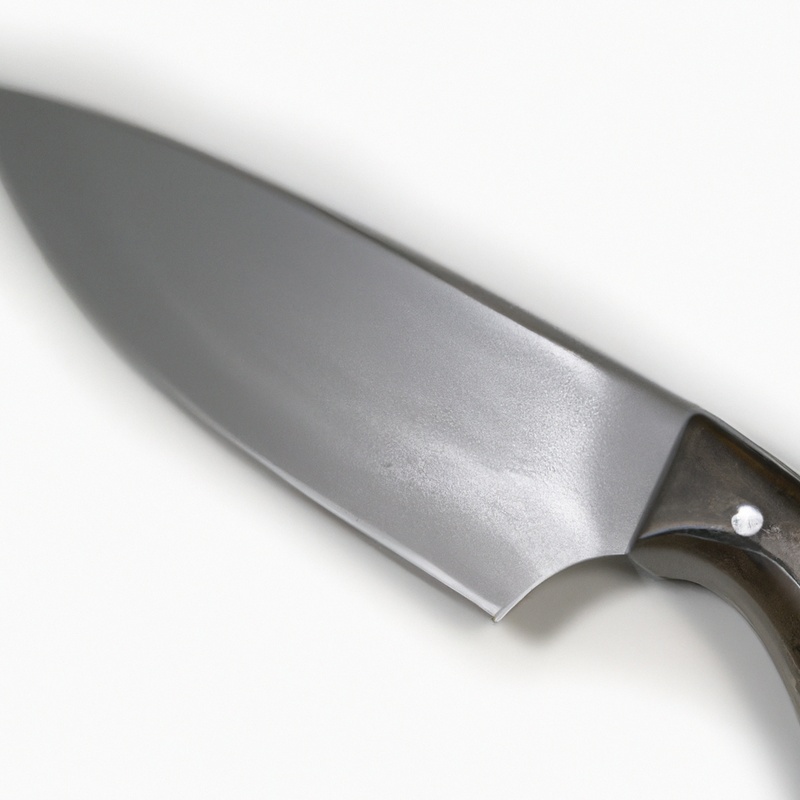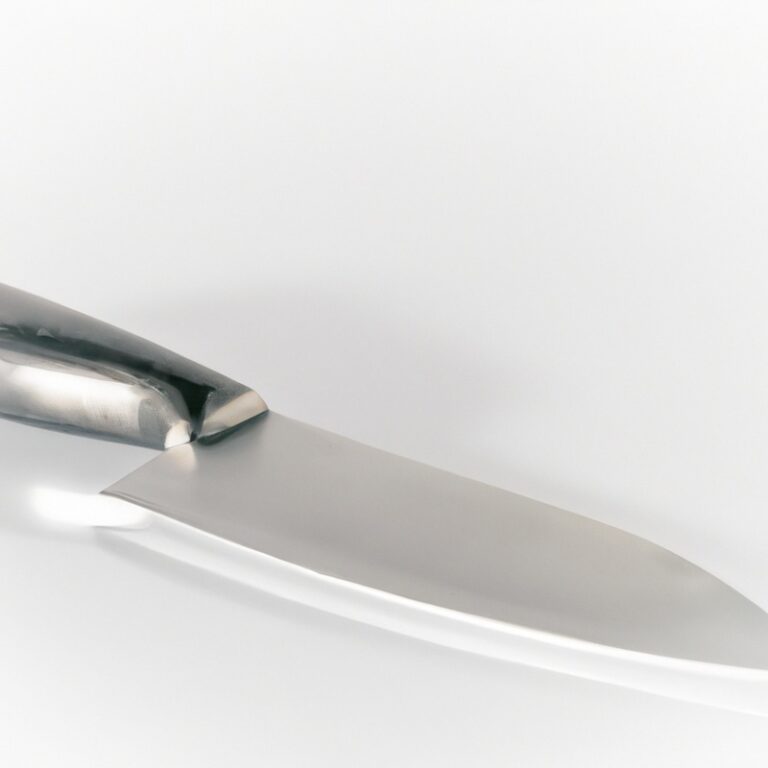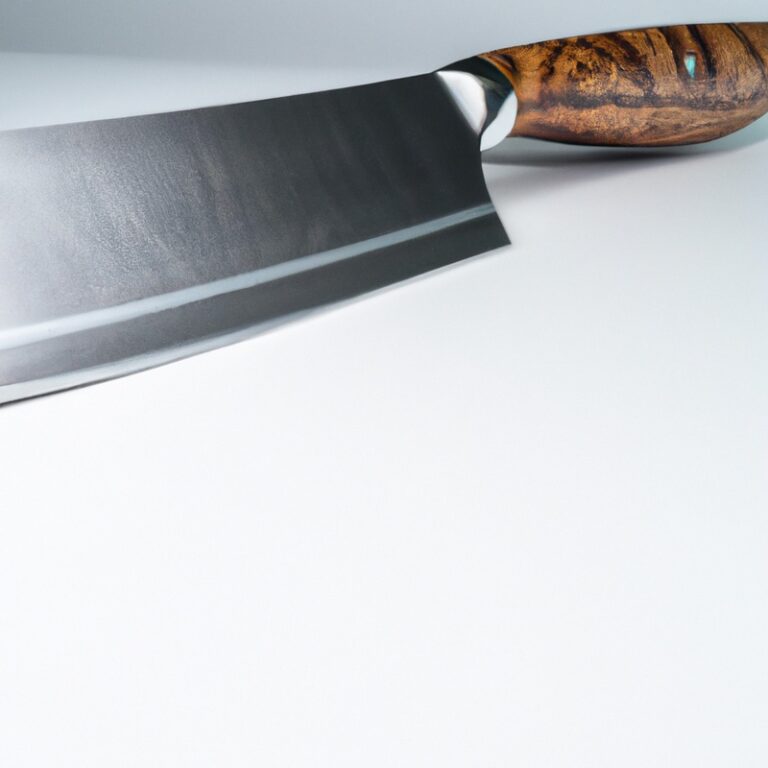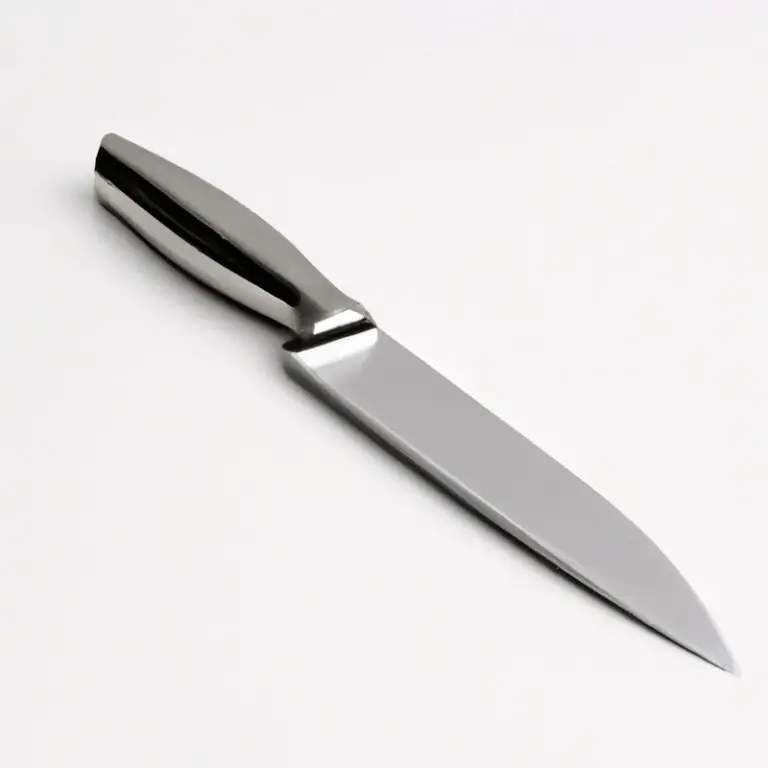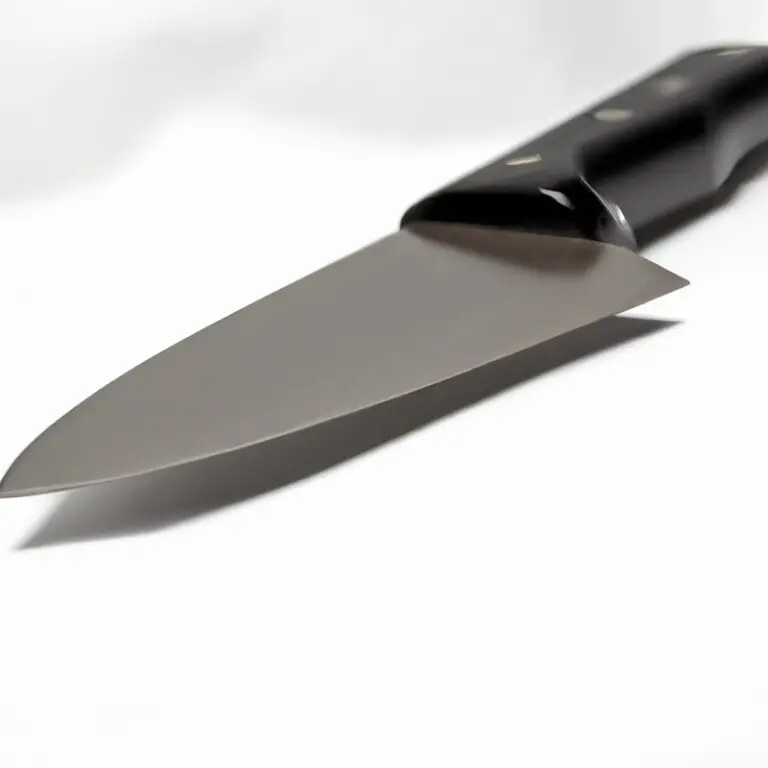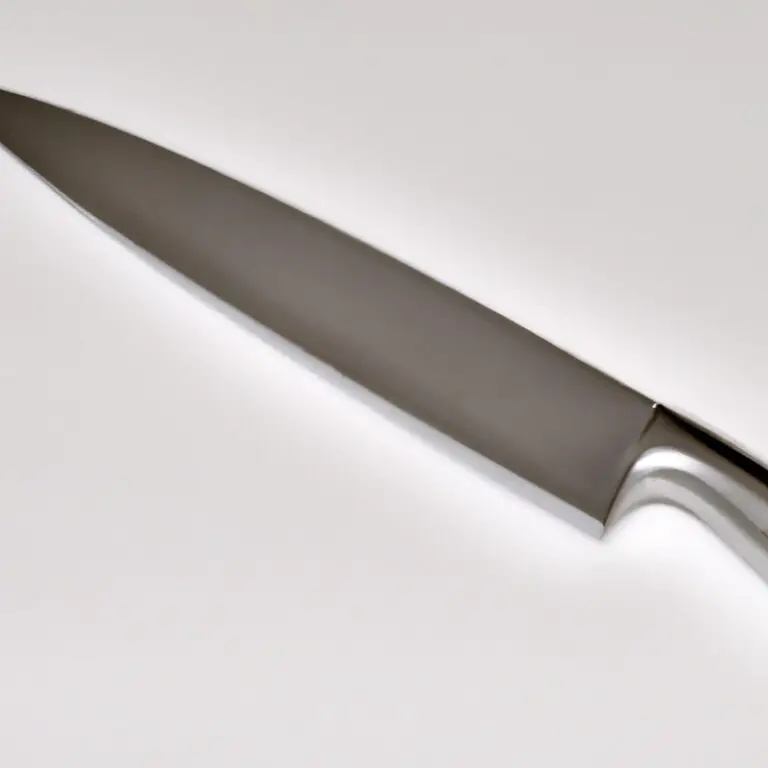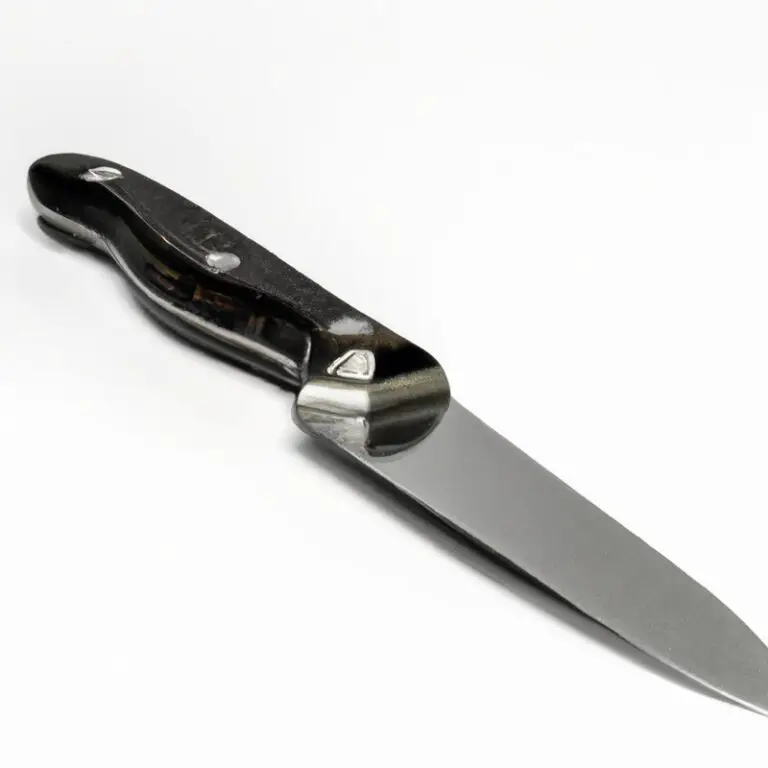How Do I Remove Stuck-On Food From My Paring Knife Blade? – Easy Tips!
Key Takeaways:
- Soak the blade in warm, soapy water to help loosen the stuck-on food.
- Use a scrub brush or abrasive pad to gently scrub the blade, being careful not to scratch it.
- Try using a mixture of baking soda and water as a natural cleaning solution for stubborn residue.
- Remember to always hand wash and dry your paring knife to keep it in top condition.
Have you ever struggled with cleaning your paring knife blade after a culinary adventure? Removing stuck-on food from a knife blade can be a daunting task, especially if you don’t know the proper techniques.
But fret not – as a seasoned home chef, I have tried and tested several methods to help you out.
From soaking in warm soapy water to applying natural solutions like lemon juice, this article covers the best ways to clean your paring knife blade without damaging it. So, say goodbye to stubborn food stains and keep your kitchen utensils immaculate with these tried and tested tips!
| Method | Steps |
|---|---|
| Hot Water + Soap | Soak the knife in hot, soapy water for several minutes. Use a soft sponge or cloth to gently scrub the blade until the food comes off. |
| Baking Soda + Water | Mix baking soda and water to make a paste. Apply the paste to the blade and let it sit for a few minutes. Use a soft brush to scrub the paste off, then rinse with hot water. |
| Vinegar | Fill a bowl with vinegar and let the knife blade soak for a few minutes. Use a soft sponge to wipe away the loosened food particles, then rinse with water. |
| Lemon Juice | Squeeze fresh lemon juice onto the blade and let it sit for a few minutes. Use a soft brush or sponge to scrub the loosened food particles, then rinse with water. |
| Boiling Water | Boil enough water to fully submerge the knife blade. Carefully lower the blade into the water and let it soak for several minutes. Use tongs or a cloth to remove the knife from the water and wipe away any loosened food particles. |
Soak in warm soapy water
Soaking your paring knife in warm soapy water is an effective way to remove stuck-on food particles. The warm water will soften the residue, making it easier to scrub off with a soft-bristled brush.
It is crucial to use mild soap to avoid damaging the blade’s surface.
Avoid using hot water as it can cause the blade’s metal to expand, leading to warping. After soaking for a few minutes, gently scrub the blade with a soft brush and rinse with warm water.
Remember to dry the knife immediately to prevent it from rusting.
Soaking in warm soapy water is a simple and inexpensive solution that will help keep your paring knife clean and sharp.
Use a soft-bristled brush
Using a soft-bristled brush is an effective way to remove stuck-on food from your paring knife blade. The soft bristles can reach tight corners and spaces without scratching or damaging the blade.
It is crucial to choose a brush with soft bristles because hard bristles can cause abrasions on the surface of your blade.
Avoid using wire brushes, steel wool, or any other abrasive material as it can damage the blade. When using a soft-bristled brush, gently scrub the blade in a back-and-forth motion until the food particles come off.
You can also use a toothbrush or a dedicated vegetable brush with soft bristles.
Dip the brush in warm, soapy water before scrubbing the blade. Rinse the blade with hot water and dry it with a clean cloth or paper towel immediately.
Using a soft-bristled brush is a simple and effective way to remove stuck-on food from your paring knife blade without causing any damage.
Incorporating this method into your knife care routine can help to ensure that your paring knife remains in good condition and performs optimally.
Try baking soda and water
To remove stuck-on food from your paring knife blade, you can try using baking soda and water. Baking soda is a gentle abrasive that can help to loosen food particles from the knife blade.
To use this method, mix a tablespoon of baking soda with a tablespoon of water to make a paste.
Apply the paste to your knife blade and let it sit for a few minutes. Then, use a soft-bristled brush to scrub the area gently.
Rinse the blade with warm water and dry it immediately.
Be careful not to use too much pressure or scrub too hard, as this can damage the blade. You can repeat the process if necessary.
This method is safe for most types of knife blades and is an inexpensive and readily available option for cleaning your paring knife.
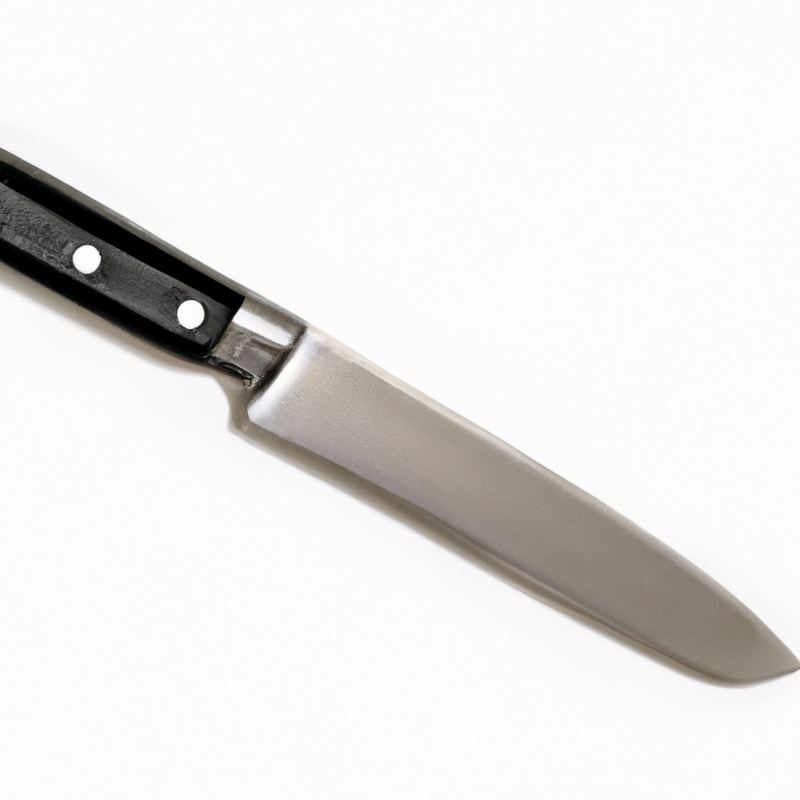
Apply vinegar and let it sit
Applying vinegar and letting it sit is an effective method of removing stuck-on food from your paring knife blade. The acidity of vinegar helps break down the food particles, making it easier to clean your blade.
To use this method, pour vinegar on the affected area and let it sit for 10-15 minutes.
After letting it sit, use a soft-bristled brush to scrub off the food particles. Rinse the knife with warm water and dry it immediately with a soft cloth to prevent rusting.
It’s important to note that vinegar should not be left on the knife for too long as it can cause damage to the blade.
Use lemon juice for a natural solution
Use lemon juice for a natural solution: Lemon juice is an excellent natural cleaning agent that can help remove stuck-on food from your paring knife blade. The citric acid in lemon juice can dissolve food particles and stains, making it easier to clean the blade.
To use lemon juice, simply cut a lemon in half and rub the cut side over the blade.
Alternatively, you can squeeze lemon juice onto the blade and let it sit for a few minutes. Then, use a soft-bristled brush or sponge to scrub the blade gently, rinse with water, and dry immediately.
Lemon juice is a safe and effective option that won’t damage your knife blade or leave any chemical residue.
Plus, it can leave your knife smelling fresh and citrusy. However, keep in mind that lemon juice may not work for all types of stuck-on food.
If it doesn’t work, you can try one of the other methods listed in this article.
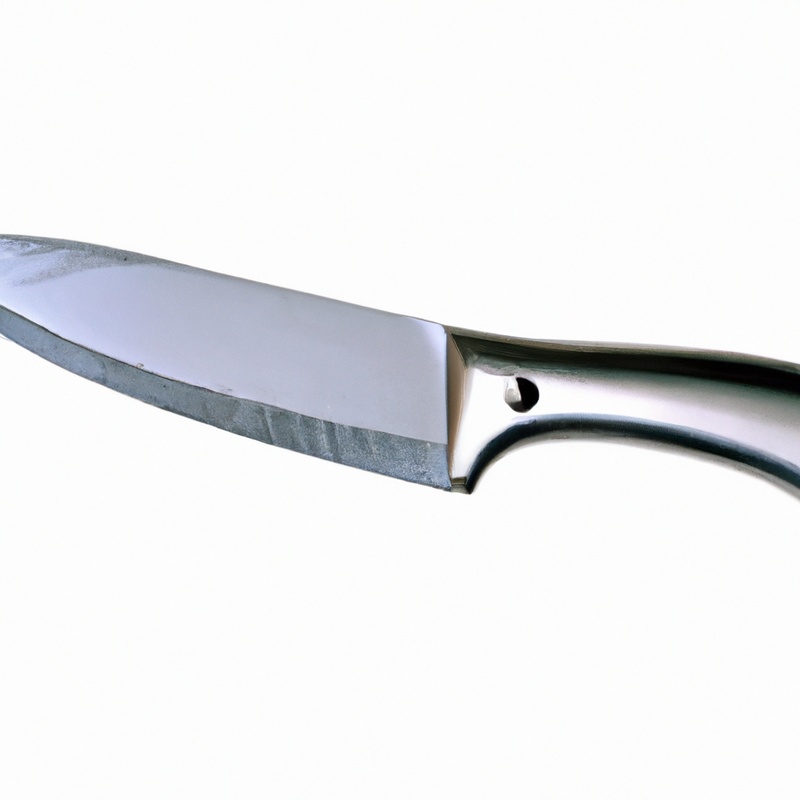
Try using dish soap and a sponge
Another effective way to remove stuck-on food from your paring knife blade is to use dish soap and a sponge. It is a simple yet practical method that can effectively remove even the toughest residue.
To start, squirt a small amount of dish soap onto the blade of the paring knife.
Then, using a sponge, gently scrub the blade to remove the food residue. Make sure to scrub the blade in the same direction as the blade’s edge to avoid causing damage.
After cleaning the blade thoroughly, rinse the knife with hot water and dry it immediately to prevent rust.
Remember, keeping the blade dry is a crucial step to prevent rusting. One added benefit of using dish soap and a sponge is that it is a readily available solution that most households have access to.
So, the next time your paring knife has difficult-to-remove food residue, try this simple yet effective solution of dish soap and a sponge before trying anything else.
Soak in white vinegar overnight
Soaking a paring knife blade in white vinegar overnight is an effective method to remove stubborn food particles. The acidic properties of the vinegar help break down the residue, making it easier to clean the blade the next day.
Simply add enough white vinegar to cover the blade, and let it sit overnight.
The next day, rinse the blade with hot water and dry it immediately to prevent any potential rusting. Avoid using abrasive materials on the blade, as they can scratch and damage the metal surface.
However, be cautious not to leave food particles on the blade for too long before cleaning, as this can cause further damage and make cleaning more difficult.
Rinse with hot water and dry immediately
Rinsing your paring knife with hot water and drying it immediately is a quick and effective way to remove stuck-on food from the blade. Hot water helps to loosen the food particles and makes them easier to remove.
Drying the knife immediately with a clean towel or cloth prevents moisture from settling on the blade and causing rust or corrosion.
It is important to note that leaving your knife wet can lead to bacterial growth and can damage the blade. So, always make sure to rinse your knife with hot water and dry it immediately after use.
Don’t use abrasive materials
It’s crucial not to use abrasive materials when cleaning your paring knife blade. Abrasive materials such as steel wool, scouring pads, or hard-bristled brushes can scratch the surface of the blade, making it more prone to rust and corrosion.
Moreover, abrasive materials can damage the sharpened edge of the blade, making it less effective for cutting.
Instead, use a soft-bristled brush, a sponge, or a cloth to gently scrub the blade’s surface. Avoid applying too much pressure, which can also damage the blade.
If you need to remove stubborn debris, try soaking the blade in warm soapy water or a vinegar solution first to loosen it up.
Ultimately, by avoiding abrasive materials, you can help maintain the sharpness and durability of your paring knife blade.
Avoid leaving food on the knife for too long
Leaving food on a knife for too long can make the cleaning process more difficult. The longer food residue stays on a knife, the harder it becomes to remove it.
It can also cause the blade to rust or corrode, which can ultimately damage the knife.
To make cleaning easier, it’s important to avoid leaving food on a knife for too long. After using a knife, wipe it immediately to remove any food residue.
If you do notice food remaining on the blade, clean it as soon as possible with warm soapy water to prevent it from sticking.
By taking these simple precautions and cleaning your knife regularly, you can help extend its lifespan and keep it in good condition for years to come.
Final Verdict
Removing stuck-on food from your paring knife blade is essential for maintaining its sharpness and prolonging its lifespan. By following the tips and techniques outlined in this article, you can easily clean your knife without causing damage and ensure it remains in optimal condition.
Remember to soak the knife in warm, soapy water, and use gentle cleaning tools such as soft-bristled brushes, baking soda, and vinegar.
Avoid using abrasive materials and be sure to rinse and dry the knife immediately after cleaning it. By implementing these practices, you can trust that your paring knife will remain a reliable and functional tool in your kitchen for years to come.

